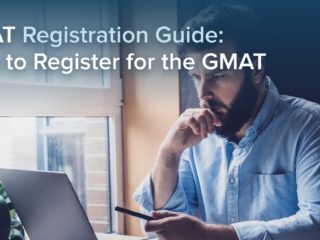Last Updated on May 12, 2023
When preparing for the GMAT, a person goes through phases of learning about the topics that appear on the test. In other words, people understand GMAT topics on a continuum that goes from “I know nothing about this topic” to “I understand this topic so well that I can’t get questions from it wrong,” and as they prepare for any given topic, they move along that continuum.
Chances are that when you begin preparing, you’ll have a different initial degree of understanding for each GMAT topic. For example, perhaps you’re extremely good at Probability questions. Now, by extremely good, I mean that you almost never, if ever, get those questions wrong on the actual test. However, perhaps you’re pretty bad at Number Properties questions; you almost always get those questions wrong.
As you study a topic, you develop an understanding of that topic. When you study a bit more, your understanding deepens a bit more. The more you study effectively, the deeper your understanding becomes; more proper study translates into deeper understanding. Here comes the problem, and it’s a big problem: Many students incorrectly assume that having a deeper understanding of a topic is tantamount to having a deep enough understanding of a topic. In other words, they mistake improvement for mastery. This phenomenon is the cause of a great of deal stress and, sometimes, confusion regarding why test-takers are not scoring as high as they expect to on the GMAT.
The situation could unfold as follows: At first, you know nothing about Number Properties questions, for example. They confuse you to no end and you consistently get them wrong. So, you begin to study the topic. You do a bit of reading from which you learn some interesting things about the subject. You watch videos of an instructor solving example questions. You feel better about the topic. After all, it was pretty easy to watch the videos, and what was taught made sense. You then solve a handful of practice questions on Number Properties, getting about half correct. At this point, you get up from your desk to make yourself an espresso. As you’re waiting for the beans to grind, you think to yourself, “Wow, I’ve really mastered Number Properties. I feel good!”
With that thinking, there will be rough waters ahead. Have you really mastered number properties? Let’s consider the situation. What happened? You did some reading, watched someone else solve some questions, and answered some questions on your own. You’re better at Number Properties now than you were before you began studying, but you have yet to attain mastery of the topic. The positive feeling about the topic that you’re experiencing results from the fact that three hours ago you knew nothing about the topic, and now you know a little bit. You’ve accomplished something, and this accomplishment feels good. This is a great FIRST STEP. However, too often students see this as the final step.
I see people demonstrate this pattern time and again. They learn a little bit about a topic, but not enough to know all the ins and outs. Then, they are shocked when they don’t earn a higher score on their practice tests or official GMAT. Sometimes, they reason that the issue is their test-taking ability, that under test conditions, they make lots of careless errors. They reason that those mistakes must be what is holding them back. Of course, there is nothing shocking happening, and careless errors are not really the issue. Test-takers who have experiences like these are simply less than prepared.
To avoid this pattern, and for a variety of other reasons, anyone preparing for the GMAT can benefit from having an understanding of the phases of learning. Let’s review each phase along the continuum of GMAT preparation.
- Phase I: No Knowledge
- Phase II: Initial Recognition
- Phase III: Basic Understanding
- Phase IV: Easy-Level Mastery
- Phase V: Deep Conceptual Understanding
- Phase VI: Medium-Level Mastery
- Phase VII: Single-Topic Skill at All Levels
- Phase VIII: Mixed-Topic Skill at All Levels
- Phase IX: Topic Mastery
Phase I: No Knowledge
You know nothing about a particular topic. You’ve never seen it before. You’ve never even heard of it. You can’t even begin to answer questions that involve this topic.
Phase II: Initial Recognition
After some looking around and light study, you begin to recognize the topic when you see it. You know the topic shows up in GMAT questions. However, you know nothing about the concepts, skills, or strategies used to answer questions involving the topic. You get nearly 100% of all questions on the topic incorrect. If someone were to explain to you how to solve one such question, you’d struggle to follow the solution. Your ability to get these questions correct on the test is close to 0%.
Phase III: Basic Understanding
After more study, in addition to recognizing the topic when you see it, you have begun to learn some basic rules, concepts, and procedures regarding this topic. You’re able to better follow someone’s solutions to questions involving the topic. In addition, you may be more regularly able to answer the easiest of such questions, but you are slow and prone to making mistakes in answering them. You continue to answer almost all, if not all, of the medium and hard questions in this topic incorrectly.
Phase IV: Easy-Level Mastery
After significantly more study, you know well the concepts, rules, and formulas associated with the topic. In addition, you can easily follow an instructor’s solutions to the questions. In other words, you can watch someone else do the work and understand what they’ve done. However, you’re still struggling to correctly answer anything but the easiest of questions; medium and hard questions give you trouble.
Phase V: Deep Conceptual Understanding
You begin to see patterns, connections, and time/energy-saving moves when you encounter questions involving this topic. At this point, you have a deep conceptual understanding of the topic and its applications. You could sit down with someone and talk accurately with that person about the topic; you could teach them the major concepts. Easy questions are now a piece of cake for you, and you’re getting better at solving medium-level questions, especially when you are practicing within one topic (for example, you’re solving only Number Properties questions). However, you often take longer than two minutes to solve these questions. You’re accurate but slow. In addition, you regularly get hard questions incorrect. Furthermore, you struggle to correctly answer questions while doing mixed topic sets of questions (for example, a 31-question test of Rate-Time-Distance, Probability, Ratios, and Word Problem questions).
Phase VI: Medium-Level Mastery
With significantly more study, you now deeply understand the concepts, strategies, and applications of a topic. You could teach someone a great deal about the topic. In addition, when you are solving questions involving only that topic, easy- and medium-level questions are now easy for you. You regularly answer them correctly within about two minutes. However, hard questions continue to present challenges for you.
Phase VII: Single-Topic Skill at All Levels
Having gained deeper insight into the topic though more study, at this point, you can quickly and correctly answer easy, medium, and hard questions involving the topic when you are solving questions only from that topic. For example, as long as you are solving 30 divisibility questions, you’re solid. However, your ability to answer questions correctly declines when you engage in mixed-question sets. To use a baseball analogy, you’re not yet completely comfortable fielding random pitches.
Phase VIII: Mixed-Topic Skill at All Levels
You’re able to answer a wide range of questions of various difficulties from a topic, and you’re comfortable with wide variations in question language, scope, and form. In addition, you’re able to comfortably answer questions of this type when they appear in mixed-topic sets. However, you are not able to answer such questions under the increased pressure of practice tests. When you take these practice tests, your accuracy falls. Your ability to correctly answer questions involving this topic on the actual GMAT is still in question.
Phase IX: Topic Mastery
After spending time taking and carefully reviewing practice tests, you have gone back and addressed any lingering weaknesses you have in answering questions involving this topic. Now, regardless of whether you see such questions in single-topic sets, in mixed sets, or on the test, you are happy to see them. In answering them, you are fast, clean, and accurate. It’s not that you can get such questions right; it’s that you can’t get such questions wrong. You have mastered answering questions involving this topic.
Those are the phases of learning. You can see that, even though going from one of the initial phases to one of the middle phases may take work and may mean that you’ve learned quite a bit, doing so does not mean that you’ve gotten to a point at which you will correctly answer questions involving a topic should you see them on the GMAT. Only when you get to the last couple of phases can you be confident that you will consistently correctly answer questions involving a topic, and only when you’ve reached the mastery phase for all or close to all GMAT topics does it make sense to expect to earn an outstandingly high score.
So, when you are preparing for the GMAT, be honest with yourself about what phase of learning you’re in for each topic. Keep moving along the learning continuum for one topic after another until you have attained the level of mastery that you need to achieve your goal score. And remember, enjoy the game!




Thanks for the info, which i take it as milestones to achieve a great score!
Does each phase correspond to a particular bucket of GMAT score?
Glad this was helpful for you! Unfortunately, there is no exact calculation for which preparation phase corresponds to which GMAT score. However, if you’re interested in figuring out how long you may need to reach your score goal, this article on GMAT preparation timelines will help.
Many Thanks Scott!!, the article you shared with me gave a decent scale to check my progress, taking into account time of preparation and corresponding increase in score
You’re very welcome! Best of luck with your GMAT studies!
This is great piece of information but I have just one question. Once you attain the final stage for one topic and decide to move on with another topic, how you can make sure the topics that you covered already doesn’t bounce you off after some days.. I mean how we can maintain the accuracy in the topics already covered.
Any strategy on that… any way to keep track of it just like you have elaborated steps to track your progress for a topic in hand
You raise a very important issue! Periodically reviewing past topics is an essential part of GMAT prep. This article lays out some simple strategies that will help you stay fresh on what you’ve learned.
Thanks .. I have so much clarity now .. cant thank you enough 🙂
You’re welcome Anurag! Glad it helped you.
Beautifully written
Thank you! Feel free to reach out if you have any questions.
Genius.
🙂